The crypto world is bombarded with information every day 🧨, project parties keep releasing news, media frantically exaggerates, and if you're not careful, you can be caught by FOMO (fear of missing out). Plus, KOLs often ‘recommend’ without a thought, easily reverting to irrational behavior, resulting in chasing highs and selling lows, frequent trading, and speculative itch... ultimately leading to net losses 💸. #加密市场回调
This manual helps you see the trading devil inside you, using data and strategies to restrain human weaknesses, allowing you to avoid pitfalls and earn more. (Recommended to bookmark and follow) #山寨季何时到来?

1️⃣ "I sold too early again, should I buy back?" 😱
Bitcoin surged from 70,000 to 100,000, Ethereum skyrocketed from 3000 to 4500, did you sell early? Immediately, a thought pops up: "Should I buy back?" This is the killer move of FOMO.
Data tells you the truth:
The 20% of users with the lowest trading frequency have an annualized return of 18.5%, outperforming the market.
The high-frequency trading group pays 3.8% in trading costs, resulting in only 11.4% returns, far lower than the low-frequency group.
➡️ Frequent operations will only cause you to miss key rises for a few days; holding long is more profitable.
Comparison of returns and cost ratios under different trading frequencies:
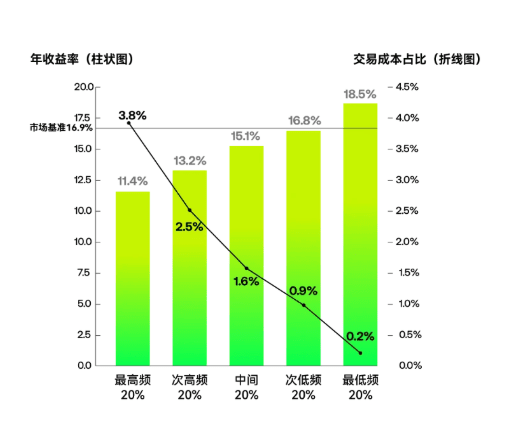
Solutions & strategies:
Discipline over impulse: use grid trading, set up low buy and high sell, keep the base position intact, and cash out profits in batches.
Plan ahead: set a holding plan, clarify strategies for negative news and target points for reducing positions, to avoid shaky hands.
2️⃣ "Should I go all in this time?" 💣
Thinking: "Opportunities are rare; others are fearful while I'm greedy, All in one go!" → High-risk gambling mentality activated.
Data insights:
All in may bring huge profits, but the maximum drawdown can reach -54%, with a low win rate.
Regular investment / DCA strategy has low maximum drawdown, stable win rates, and controllable risks.
Comparison of position-building strategy performance: maximum drawdown and win rate:
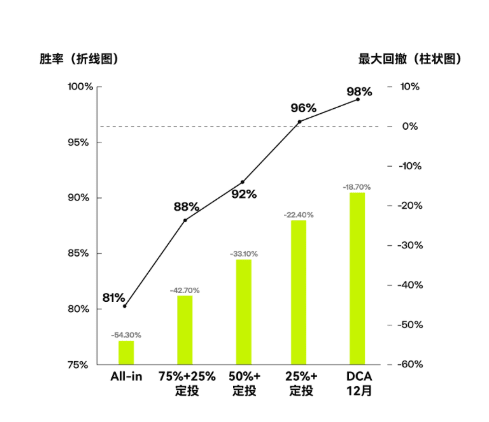
Strategy suggestions:
DCA in batches: divide funds into fixed-time investments to lower costs and build a core position.
Mixed strategy: partially build positions in one go, and the remainder through batch DCA.
Position management: set a maximum acceptable drawdown to avoid emotional all-in.
3️⃣ "I can't help it, should I enter?" 🤯
Seeing low-cap coins being hyped up, community discussions heating up, and search popularity soaring, your mind starts to smoke: "I want to buy! I want to buy!"
📊 Data shows that when DOGE or TRUMP search popularity peaks, the 7-day and 30-day returns are almost all negative. Peak popularity often marks the starting point of a decline.
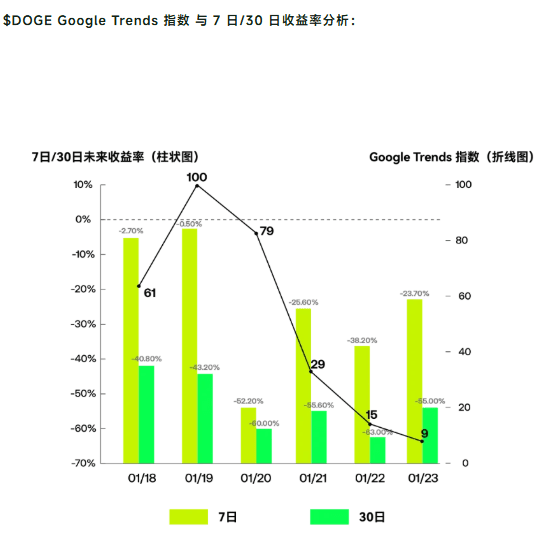
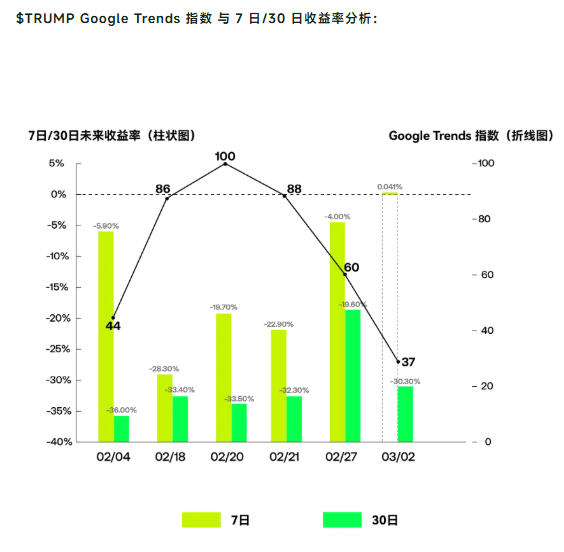
Strategy buffer against FOMO:
Pay attention to Google Trends or social heat; when the index approaches historical highs, stay calm.
Batch buying + profit-taking and stop-loss strategies, controlling costs with Martingale to lower average price.
Want to earn from hype? You can use smart arbitrage, risk-neutral strategies to earn market 'rent', avoiding price fluctuation risks.
4️⃣ "Could this be the peak?" 🤔
Struggling after profit: Selling makes you fear missing out, not selling makes you fear loss. Manually chasing the highest point? Almost impossible.
Data insights:
When floating profit is +50%, the average drawdown over the next 30 days is 25%, with a 54% probability of significant profit retracement.
Greedy late selling = shrinking profits.
Future returns and retracement risks in different floating profit ranges:
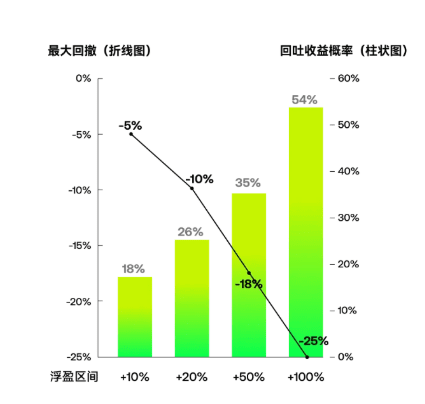
Strategy suggestions:
Automated batch profit-taking, letting robots secure profits for you.
Inverted pyramid selling method: sell a larger proportion as the price rises (e.g., 10% → 20% → 30%), securing peak profits.
5️⃣ "Should I cut losses?" 💔
Loss aversion psychology at play: not wanting to admit failure, stubbornly holding onto losing positions.
📊 Data shows that the deeper the loss, the lower the probability of recovery, and the time required grows exponentially (a -50% loss needs a 100% gain, at least wait for the next bull market).
Correlation between trading behavior in loss state and days to break even:
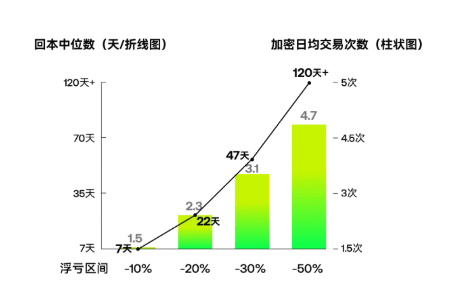
In-depth analysis:
"Hanging on" = decision paralysis, missing other opportunities.
Emotional trading = averaging down, expanding losses.
Strategy suggestions:
Clear stop-loss & dynamic adjustment: reduce positions each time support is broken to avoid mindless holding.
Shift attention to minimize losses: admit losses and invest remaining funds into more promising assets.
🔥 Summary:
In the crypto trading world, it's not about courage but about discipline.
Less movement, batch trading, automation, position management = The formula for steady profits.
Recognize inner demons, use strategies to overcome human nature, so you can survive longer and earn more in a crazy market 💪
Many understand trends, but few follow the right rhythm.
Like 👍, share, follow me, and I'll help you capture more market opportunities, sharing the ups and downs with you! Let's work hard together!
In the current market environment, short-term operations are indeed necessary. If you keep waiting for spot recovery, you may feel the agony of time. I've recently been fully engaged in secondary short-term and primary low-cap operations, yielding good results. Friends who want to follow can privately message me!


